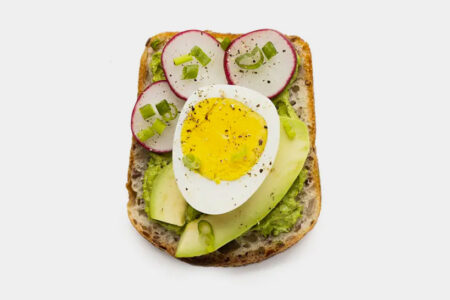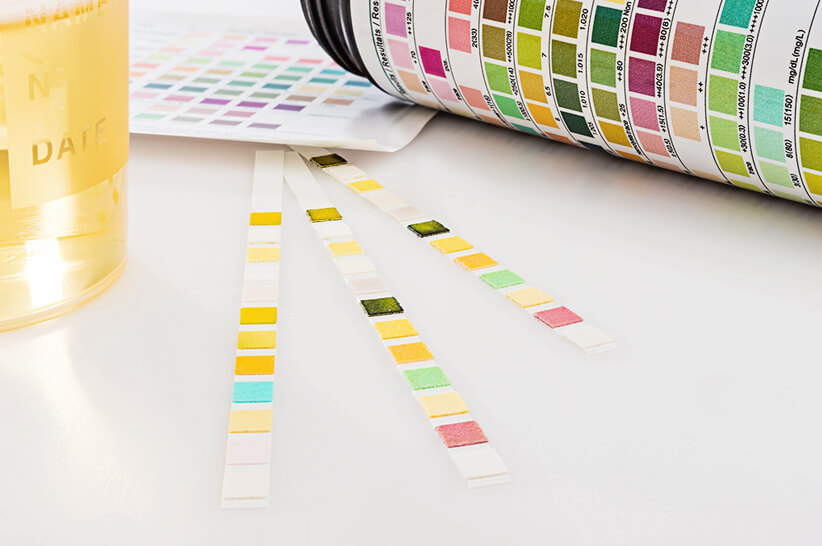Want to get in ketosis and start reaping its benefits? Here are 7 effective tips that help you get there fast.
For keto to work its magic, you first need to enter ketosis, a metabolic state in which the body burns fat to make ketones, which are acidic molecules that the body makes to replace glucose as fuel.
And how long does it take to get into ketosis?
About 1-3 days for most people, but others may take even longer.
If you’re curious to learn how to get into ketosis fast and effectively, there are a couple of steps you need to follow and that are outlined below. Follow each tip and you’ll start reaping the benefits of ketosis in no time.
1. Reduce Your Carb Consumption
Keto guidelines usually recommend reducing carbs to 5-10% of daily calories or 20-50 g per day. This seems to work well for the majority of keto-ers.
So, why carbohydrates?
Carbohydrates are your body’s, and especially your brain’s, preferred fuel. They’re easier to digest and break down than both fats and protein. Carbs also need less oxygen to be broken down – helping minimize oxidative stress in the brain 1.

Considering these facts, it becomes obvious your body will stick to burning carbs instead of fat as long as it can. So, to force it to burn fat (including body fat), you need to deprive it of its precious carbs.
Once you do that, you create an energy crisis that the body handles by going into fat-burning mode – ketosis. With ketosis, the brain (and other tissue) gets a steady energy supply in the form of ketones.
To reduce carb intake, exclude grains, legumes, starchy veggies, most fruit, sugar, honey, and other high-carb ingredients. To make sure your daily carb intake is within the recommended limits, apps like Carb Manager or My Macros+ can help.
2. Increase Your Physical Activity
Exercising and being physically active can help you reach ketosis faster.
What exercising does is deplete liver glycogen, which needs to happen for your blood glucose levels to drop low enough to force the body to start making ketones 2.
The liver stores around 100 g of glycogen at any given time 3. It takes around 12-24 hours to deplete these stores once you restrict carbs 4. But the actual rate of glycogen depletion varies greatly depending on how physically active you are – the more active you are, the faster the glycogen depletion.
Another thing to note is that the body stores glycogen in muscles as well. Muscle glycogen serves as energy storage for muscles only, however. Still, depleting muscle glycogen can help lower circulating blood glucose since the now depleted muscles will use circulating blood glucose for glycogen repletion.
And how do you put your body into ketosis with exercise?
While any type of exercise will do, high-intensity interval training (HIIT) is best for glycogen depletion and ketosis. HIIT involves alternating between high- and low-intensity exercise. For example, a quick spring up the stairs followed by a walk down back is a type of HIIT.
3. Include MCT Oil in Your Diet
Supplementing your diet with MCTs may prove to be the fastest way to get into ketosis.
MCT stands for medium-chain triglycerides, types of fat that the body digests and uses differently from any other fat. MCTs don’t need enzymes to be digested. Instead, they’re absorbed in the small intestines and head straight to the liver. There, they’re readily converted into ketones.

MCTs from coconuts boost ketone production.
Because MCTs are easy to convert into ketones, they’ve been a big part of keto diet therapies for decades. Not surprisingly, they’re a popular supplement among keto‑ers, too.
MCT oil can help boost your ketone levels more than if you just followed a classic keto diet without MCT oil 5. However, don’t go overboard with it thinking the more, the merrier. Taking more than the recommended daily limit of up to 30 ml a day can lead to cramping and diarrhea.
4. Try Fasting
The keto diet was originally designed to replace fasting as an epilepsy therapy. It all happened when researchers noticed that restricting carbs produces the same metabolic effect as fasting, also known as ketosis. It made getting into ketosis easier and safer for epilepsy patients.
Since then, doctors frequently suggested starting the keto diet with a short fast to speed up ketosis 6. Unfortunately, later studies showed that fasting usually does not affect the time it takes to get into ketosis. Still, some people may benefit from a short fast before initiating keto.
And who are these folks?
People with metabolic inflexibility may struggle to enter ketosis more than others, and a short fast may help them reach their diet goal sooner. Metabolic flexibility refers to the body’s ability to adapt to changes in metabolic energy and demand 7.
When you’re metabolically flexible, your body should have no problem switching to burning fats for energy when carbs are low. But the same is not the case when you’re metabolically inflexible.
Besides boosting metabolic flexibility, fasting helps deplete glycogen stores for quicker ketosis 8. If you want to know how to put your body into ketosis through fasting, consider trying intermittent fasting methods like the 16:8 diet, the 5:2 diet, and the Warrior Diet.
5. Consume More Healthy Fats
You know carby meals keep you out of ketosis, but what foods keep you in ketosis?
Well, fat-rich foods definitely top the list.
Because you’ll no longer be getting energy from carbs, it’s important to replace them with fat. On a keto diet, fat should account for 60-80% of your daily calories.

Foods rich in fat will serve as your body’s new source of energy. But how to stay in ketosis with the help of dietary fats? To reach the recommended threshold, base your keto diet around butter, coconut oil, olive oil, oily fish, full-fat dairy, nuts, seeds, and avocado.
Eating enough fat on a keto diet will also help you avoid starvation mode – when the body reacts to severe calorie restriction by reducing energy expenditure. You don’t want that to happen because starvation mode can make long-term weight loss difficult.
6. Take Enough Protein
You need protein in your keto diet to maintain normal health and functioning. Protein is made up of amino acids, which your body needs to make hormones, neurotransmitters, and muscle tissue, among many other things.
However, you need to make sure you’re eating just enough protein to maintain normal health. Go overboard with it and you just might sabotage your attempts at reaching ketosis. That’s because of something called gluconeogenesis.
Gluconeogenesis is the liver’s production of glucose from non-carbohydrates, usually proteins. It’s normal for gluconeogenesis to take place on a keto diet. But when you eat too much protein, this process can raise blood glucose levels to such an extent that it inhibits ketosis 9.
Your daily protein requirements depend on your sex, age, and activity levels. Most dietary guidelines estimate the DRI (Dietary Reference Intake) for protein at around 0.8 g per kg of body weight (0.36 g/lbs). This amounts to around 56 g for average men and 46 for women. Athletes and pregnant women may have higher protein demands.
7. Monitor Your Ketone Levels
It can be hard to tell if your diet is working or not, especially if you don’t experience any of the signs of ketosis.
But can you really feel when you are in ketosis?
Signs and symptoms can be good indicators, but ketosis tests remove any doubt. One such test is urine test strips. These are inexpensive and non-invasive. You simply dip a strip into urine and wait a couple of seconds to check for any changes in the color of the strip. The darker the color, the deeper the ketosis.
The best time of day to test for ketones is early morning or a couple of hours after dinner in the evening 10.
However, urine strips work best in the first weeks of the keto diet when more ketones end up in urine. But after around 3-4 weeks on the keto diet, your body will become more efficient at using ketones, so less will end up in urine.

Ketone strips can help determine how deep you are in ketosis.
The keto diet can help you reach ketosis already within the first week. But to get into ketosis as soon as possible, you need a foolproof plan that involves carb restriction, adequate fat intake, and possibly even a bit of MCTs, fasting, and exercising.
Takeaways
- Ketosis is the first goal of the keto diet and that takes a couple of days of carb restriction to happen.
- Some people enter ketosis sooner than others, which can depend on their dietary habits and metabolic flexibility.
- Ketosis can happen sooner when you follow keto correctly.
- Some supplements combined with exercising and fasting can also help speed up the process.










![Juicing for Weight Loss: Everything You Need to Know [Plus Recipes]](/wp-content/uploads/2019/08/Juicing-for-Weight-featured-image.jpg)








